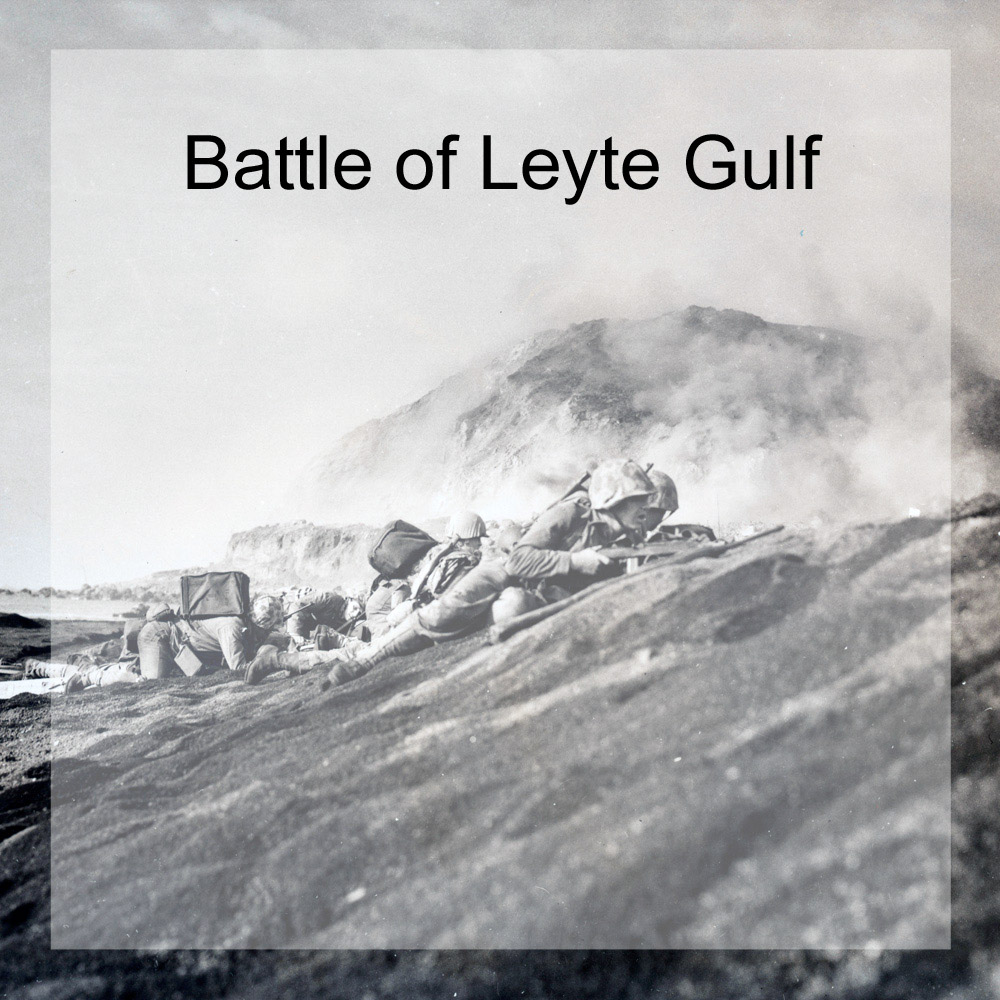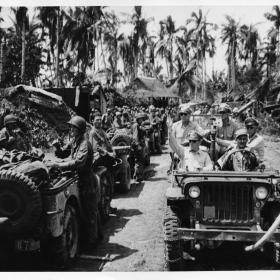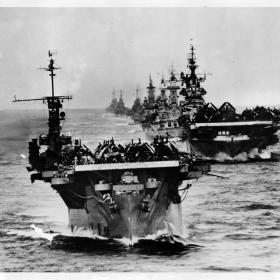Battle of Leyte Gulf
With U.S. forces making their war ashore on Leyte, Japanese naval commanders prepared to cut off American naval support in a move to forestall the loss of the Philippines by sending nearly its entire navy to Leyte Gulf. Using their remaining 6 carriers – now almost entirely bereft of planes – as bait to lure the U.S. 3rd fleet away from Leyte Gulf, Japanese admirals sent the remainder of their fleet through Surigao Straight to the south and the San Bernardino Straight to the north of the gulf. In the ensuing battles of Sibuyan Sea and Surigao Strait the more accurate American gunnery, coupled with advanced submarine warnings and the U.S. Navy’s overwhelming air superiority, destroyed the Imperial Japanese Navy’s once powerful fleet. Near the island of Samar, however, the U.S. Navy suffered crippling fire from enemy naval guns as the Imperial Japanese Navy’s plan to lure U.S. ships into open waters against their more heavily-armed battleships was successful. That success came at a high cost, as during the ensuing battle U.S. Navy pilots sunk 4 of the Imperial Japanese Navy’s remaining carriers, and 22 other battleships, destroyers, and cruisers. The U.S. Navy lost 6 ships, including the carriers Princeton, St. Lo, and Gambier Bay.


